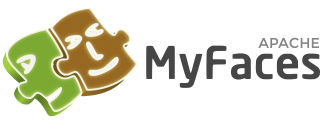
Craig L. Russell (born January 6, 1949) is an American software architect and author. He contributed to the book 97 Things Every Software Architect Should Know. [1] [2] He co-authored Java Data Objects ISBN 0596002769

Craig L. Russell (born January 6, 1949) is an American software architect and author. He contributed to the book 97 Things Every Software Architect Should Know. [1] [2] He co-authored Java Data Objects ISBN 0596002769
Craig L. Russell was born January 6, 1949, in New York City. He attended Glen Rock High School and graduated in 1966. [3] He graduated from Harvard University in 1971 with a BA in Applied Mathematics.
Craig joined Sun Microsystems to lead the development of Object Relational Mapping. He initiated the creation of Java Data Objects, for which he was specification lead for JSR 12 and JSR 243. [4] He was the architect responsible for developing the implementation of Container Managed Persistence for Sun's Java Enterprise Edition Application Server.
Craig was the contributing editor for the Object Data Management Group Standard: 3.0 Java binding. He wrote "Bridging the Object-Relational Divide."
Craig is a Director and Member of The Apache Software Foundation and a member of the Apache Incubator project responsible for bringing projects into Apache. He served as Board Chair for the 2019-2020 term. [5]
Jakarta Enterprise Beans is one of several Java APIs for modular construction of enterprise software. EJB is a server-side software component that encapsulates business logic of an application. An EJB web container provides a runtime environment for web related software components, including computer security, Java servlet lifecycle management, transaction processing, and other web services. The EJB specification is a subset of the Java EE specification.

Jakarta EE, formerly Java Platform, Enterprise Edition and Java 2 Platform, Enterprise Edition (J2EE), is a set of specifications, extending Java SE with specifications for enterprise features such as distributed computing and web services. Jakarta EE applications are run on reference runtimes, which can be microservices or application servers, which handle transactions, security, scalability, concurrency and management of the components they are deploying.
Java Data Objects (JDO) is a specification of Java object persistence. One of its features is a transparency of the persistence services to the domain model. JDO persistent objects are ordinary Java programming language classes (POJOs); there is no requirement for them to implement certain interfaces or extend from special classes. JDO 1.0 was developed under the Java Community Process as JSR 12. JDO 2.0 was developed under JSR 243 and was released on May 10, 2006. JDO 2.1 was completed in Feb 2008, developed by the Apache JDO project. JDO 2.2 was released in October 2008. JDO 3.0 was released in April 2010.
The Java Community Process (JCP), established in 1998, is a formal mechanism that enables interested parties to develop standard technical specifications for Java technology. Becoming a member of the JCP requires solid knowledge of the Java programming language, its specifications, and best practices in software development. Membership in the JCP involves a detailed review of the candidate's profile, including an assessment by current members. Typically, professionals are invited to join the JCP based on their contributions and reputation within the Java community.

NetBeans is an integrated development environment (IDE) for Java. NetBeans allows applications to be developed from a set of modular software components called modules. NetBeans runs on Windows, macOS, Linux and Solaris. In addition to Java development, it has extensions for other languages like PHP, C, C++, HTML5, and JavaScript. Applications based on NetBeans, including the NetBeans IDE, can be extended by third party developers.
The Connected Device Configuration (CDC) is a specification of a framework for Java ME applications describing the basic set of libraries and virtual-machine features that must be present in an implementation. The CDC is combined with one or more profiles to give developers a platform for building applications on embedded devices ranging from pagers up to set-top boxes. The CDC was developed under the Java Community Process as JSR 36 and JSR 218.
In software, a data access object (DAO) is a pattern that provides an abstract interface to some type of database or other persistence mechanism. By mapping application calls to the persistence layer, the DAO provides data operations without exposing database details. This isolation supports the single responsibility principle. It separates the data access the application needs, in terms of domain-specific objects and data types, from how these needs can be satisfied with a specific DBMS.
Hibernate ORM is an object–relational mapping tool for the Java programming language. It provides a framework for mapping an object-oriented domain model to a relational database. Hibernate handles object–relational impedance mismatch problems by replacing direct, persistent database accesses with high-level object handling functions.
BeanShell is a small, free, embeddable Java source interpreter with object scripting language features, written in Java. It runs in the Java Runtime Environment (JRE), dynamically executes standard Java syntax and extends it with common scripting conveniences such as loose types, commands, and method closures, like those in Perl and JavaScript.
iBATIS is a persistence framework which automates the mapping between SQL databases and objects in Java, .NET, and Ruby on Rails. In Java, the objects are POJOs. The mappings are decoupled from the application logic by packaging the SQL statements in XML configuration files. The result is a significant reduction in the amount of code that a developer needs to access a relational database using lower level APIs like JDBC and ODBC.

Apache MyFaces is an Apache Software Foundation project that creates and maintains an open-source JavaServer Faces implementation, along with several libraries of JSF components that can be deployed on the core implementation. The project is divided into several sub-projects:
Jakarta Persistence, also known as JPA is a Jakarta EE application programming interface specification that describes the management of relational data in enterprise Java applications.
OpenJPA is an open source implementation of the Java Persistence API specification. It is an object-relational mapping (ORM) solution for the Java language, which simplifies storing objects in databases. It is open-source software distributed under the Apache License 2.0.
Apache ObJectRelationalBridge (OJB) is an Object/Relational mapping tool that allows transparent persistence for Java Objects against relational databases. It was released on April 6, 2005.
DataNucleus is an open source project which provides software products around data management in Java. The DataNucleus project started in 2008.
Apache Empire-db is a Java library that provides a high level object-oriented API for accessing relational database management systems (RDBMS) through JDBC. Apache Empire-db is open source and provided under the Apache License 2.0 from the Apache Software Foundation.
Java Database Connectivity (JDBC) is an application programming interface (API) for the Java programming language which defines how a client may access a database. It is a Java-based data access technology used for Java database connectivity. It is part of the Java Standard Edition platform, from Oracle Corporation. It provides methods to query and update data in a database, and is oriented toward relational databases. A JDBC-to-ODBC bridge enables connections to any ODBC-accessible data source in the Java virtual machine (JVM) host environment.
The JBoss Enterprise Application Platform is a subscription-based/open-source Java EE-based application server runtime platform used for building, deploying, and hosting highly-transactional Java applications and services developed and maintained by Red Hat. The JBoss Enterprise Application Platform is part of Red Hat's Enterprise Middleware portfolio of software. Because it is Java-based, the JBoss application server operates across platforms; it is usable on any operating system that supports Java. JBoss Enterprise Application Platform was originally called JBoss and was developed by the eponymous company JBoss, acquired by Red Hat in 2006.
Oracle TopLink is a mapping and persistence framework for Java developers. TopLink is produced by Oracle and is a part of Oracle's OracleAS, WebLogic, and OC4J servers. It is an object-persistence and object-transformation framework. TopLink provides development tools and run-time functionalities that ease the development process and help increase functionality. Persistent object-oriented data is stored in relational databases which helps build high-performance applications. Storing data in either XML or relational databases is made possible by transforming it from object-oriented data.